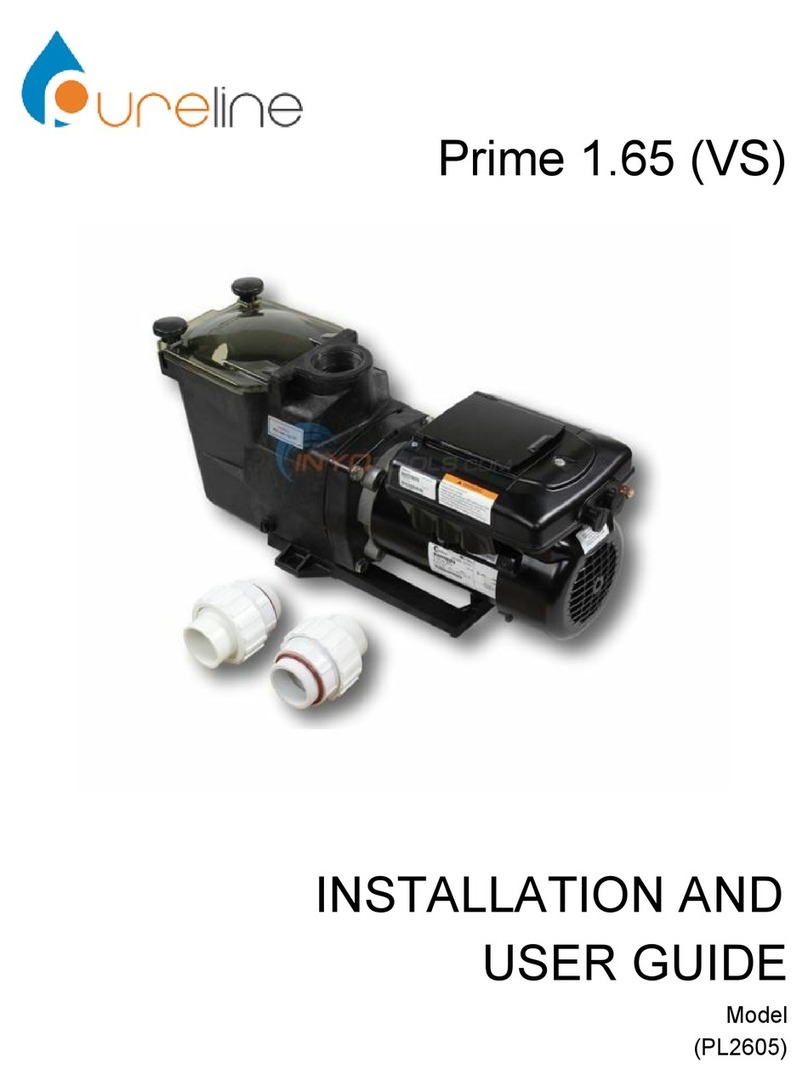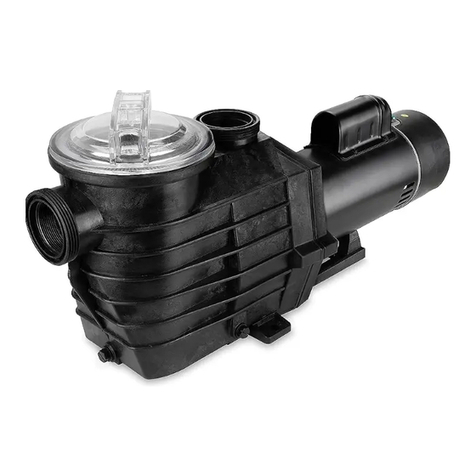
WARNING- The pump can produce high levels of suction within the suction side of the
plumbing system. These high levels of suction can pose a risk if a person comes within close proximity
of the suction openings. A person can also be seriously injured by the high level of vacuum or may
become trapped and drown. It is critical that the suction plumbing is installed in accordance with the
latest national and local codes for swimming.
DANGER- Suction Entrapment Hazard. The pump produces high levels of suction, thus
creating a strong vacuum at the main drain at the bottom of your swimming pool/spa. This suction is so
strong that it can trap adults and children under water if they come in close proximity to the drain.
The use of unapproved drain covers, or allowing the use of your pool or spa when drain covers are
either missing or broken, can result in body or limb entrapment, hair entanglement, body entrapment,
evisceration, and/or death.
Hair Entrapment: When the hair tangles or knots in the drain cover, trapping the swimmer underwater.
This is typically associated with the flow rating when the flow rating of the cover is too small for the
pump(s).
Limb Entrapment: A limb can be sucked or inserted into an opening in the drain, causing a mechanical
bind or swelling of the limbs. This is typically caused when the drain cover is missing, broken, cracked,
or properly secured.
Body Suction Entrapment: A portion of the body is held against the drain cover, trapping the swimmer
underwater. This typically presents itself when the drain cover is missing, broken, or the cover flow
rating is not high enough for the pump(s).
Evisceration/Disembowelment: Negative pressure that is applied directly to the intestines through an
unprotected suction outlet or suction outlet cover that is damaged, cracked, missing, or unsecured.
Mechanical Entrapment: Jewelry, clothes, hair decorations, fingers, toes, or knuckles can get caught
in an opening of a suction outlet cover.
WARNING- Hazardous Pressure- During startup, normal operation, and after pump shuts
off, the pool and spa water circulation system operates under hazardous pressure. Please stand clear
of circulation system during pump start-up. Before servicing your pool equipment, make sure all
systems and pump controls are in the off position and the filter manual air relief valve is open. Also
make sure all system valves are set in a position that allows water to return to the pool. Do not change
the filter valve position while system pump is running. All suction and discharge valves must be open
when starting the circulation system. Failure to follow safety and operational instructions could result in
damage, severe personal injury, or death.































